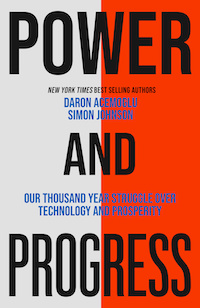Public ideas
How a public idea shapes policy, even when evidence shows it’s wrong
His determined action on interest rates has rendered RBA Governor Philip Lowe one of Australia’s more unloved public figures.
The ABC’s Ian Verrender writes With inflation rapidly falling, there's a strong case the RBA pushed too hard on interest rates. It’s not a criticism of Lowe, or of the board, but it is a criticism of their adherence to a public idea, specifically the idea that there is some close relationship between inflation and unemployment.
Economists would realize that Verrender is referring to the “Phillips Curve” (no relation to PL), and the horribly-named Non-Accelerating Inflation Rate of Unemployment (NAIRU), which are to Economics 1 students what Newton’s equations are to Physics 1 students.
The only trouble is that, for most earthly functions, while Newton’s equations describe and predict what happens in the real world, the equations linking inflation to unemployment demonstrably do not hold, as Verrender explains:

As useful as these models can be, there's a fundamental flaw in attempting to describe human behaviour via mathematical equations and then rigidly sticking to the answer spat out by the computer.
Humans aren't predictable even at the best of times. Lump them together in society and almost anything can happen. And usually does. Behaviour shifts and constantly adapts to changing social norms. But in economics, you can just assume all that away.
Verrender isn’t writing specifically about Lowe, the Reserve Bank or even the economics profession. Rather, he’s identified an overconfidence in policymakers’ ability to shape society in accordance with abstract models. That’s an overarching idea, covering everything from Soviet collectivization of agriculture through to the neoliberals’ privatization of government functions. It’s described by Yale’s Professor of Political Science and Anthropology James Scott in his 1999 book Seeing like a state: how certain schemes to improve the human condition have failed.
Dani Rodrik on productivity: it’s about more than technology
Many stresses experienced in the Australian economy, particularly the failure of wages to keep up with inflation, can be attributed to a decline in productivity over the last ten years.
The general path for firms to increase productivity is to invest in technologies or machinery, or to improve the organization of production work practices. “Working smarter not harder” is the common aphorism, and the conventional wisdom is that if enough firms improve their productivity the benefits will be manifest throughout the economy as higher real incomes.

In a Project Syndicate article – Focus on productivity, not technology – Dani Rodrik warns that what holds for individual firms does not necessarily scale up to the entire economy.Drawing on the work of Simon Johnson and Daron Acemoglu – Power and progress: our thousand-year struggle over technology and prosperity – he cites examples of countries with large sectors that have been successfully competitive on world markets, while national productivity has been declining. There is often a large productive gap between firms in high-productivity sectors and the rest of the economy.
“Raising the bottom – by providing training, public inputs, and business services to smaller, service-oriented firms – can be more effective than lifting the top” he writes.
It’s a warning against the sort of industry policy that singles out one or two “domestic champions” – a proposal that gains traction from time to time. He does not dismiss the idea that public policy should support innovation and investment in technologies, but such policies, in themselves, do not ensure that national productivity will be lifted.